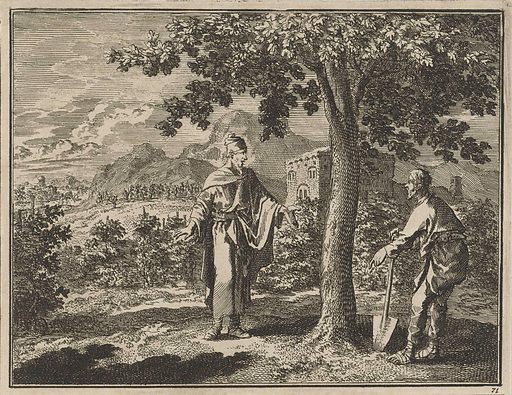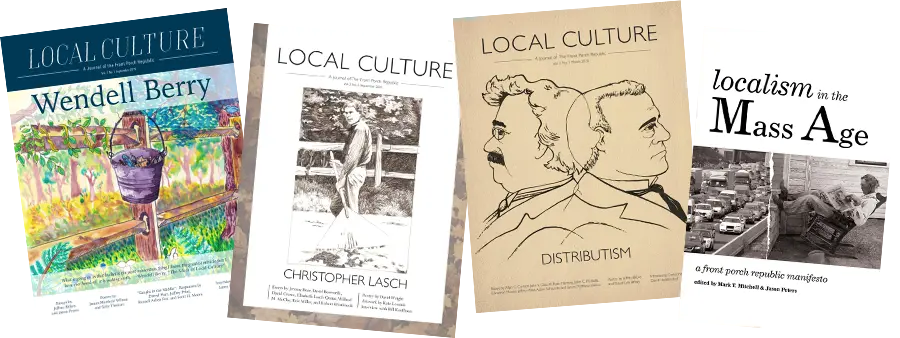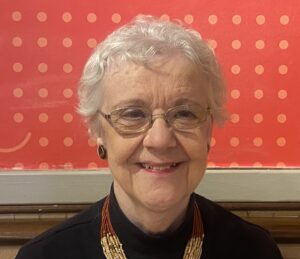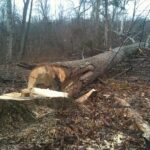Records show that George Washington frequently cited the biblical prophet Micah, who poetically described a future day when every farmer would sit peacefully under one’s own fig tree. Sometimes Washington was referring to his beloved homestead, sometimes to a land free from tyranny. In his letter to a Jewish congregation in New England, the sentiment bespoke acceptance and refuge, a place where “none shall make them afraid.”
Nine years ago, a friend with Native American roots—a neighbor who’d moved away—gave me a fig sapling, some fifteen inches tall. She’d bought it along the nearby Potomac at Washington’s historic Mount Vernon estate, purportedly a progeny from the Founding era.
For forty years, I’ve lived in a large rental complex, my section a street of townhouses. The neighbors see me as the matriarch. Miss Evelyn, keeping watch over their block as they keep watch over me. Though it’s technically not my front yard, I asked my Moroccan neighbor Hamad to dig deep and wide as we planted the fragile though leafy twig. With gratitude all around, I had hopes of an ornamental embellishment and more—an eventual harvest, though I’d only ever tasted one raw fig, at a church coffee hour.
By year 4, I had mastered the art of plucking the fruits (if indeed they are fruits; some sites say they are “inverted flowers”) just hours before the starlings and squirrels nipped. By year 6, the boughs, heavy-laden in June and again in August, outdid themselves. I searched for recipes: fresh fig bread, fig pie, cheese and figs, green beans and figs, until my digestive track revolted.
Every year at my request, through COVID and beyond, Hamad judiciously pruned the tree with my dull, very dull, ancestral hacksaw. He calculated for maximal production and lopped off tangential suckers. I supervised, mindful of height and shape. Is a harvest within reach? Will a branch obstruct the mail ma’am’s path or poke her cheek?
In year 7, I offered samples to pedestrians, mostly immigrants from warmer climes. As others helped themselves when they thought no one was looking, I held back my motherly tsk, “Take one but don’t be greedy.” I handed fistfuls to neighbors and sent pints home with friends. In October, before the great falling away, Hondurans who had moved out of the neighborhood knocked on the door, smiling, pointing, asking for useful fig leaves. I understood key words, tea and diabetes, and handed them clippers.
Year 8. What can I say of the bountiful harvest? I gave away a dozen here, a baker’s dozen there, wondering if grateful recipients knew the going price at the weekend farmer’s market. I tried my hand at fig jam—squish and boil, add sugar and lemon, no commercial pectin needed—and gifted jelly-jars, filled, sealed, and delivered. My beautician, born in India, wanted to start her own tree. When she came by asking for advice, the neighborly Mediterranean patriarch snapped a crooked twig and mimed for her a proper planting. She reports that, in a yard I’ve never seen, the rooted branch thrives.
It’s year 9, and the second harvest is ripening. Because of or in spite of annual pruning sessions, the main trunk, now sixteen inches ’round, tilts markedly eastward. Robust limbs fork off, low enough for children to climb up until I call them out, but high enough to overhang a camp chair. And there this summer I sat under my fig tree, like Nathanael of Galilee when Jesus walked by and called him away from the shade to a milieu beyond his familiar kith. I am not Disciple Nathanael or President George. My fig tree is not planted on a farm or in Prophet Micah’s peaceable kingdom. And yet . . . On a sunny afternoon, I see Hamad, my neighbor to the east, sitting, legs akimbo, under the tree’s leafy canopy. His second-generation-American, school-age children join him, all in the shadow of what I can imagine as our street’s refuge and strength.
Coda, a week later: I hear Hamad in the yard and look out an upstairs window. He’s on the far side of the fig tree conversing loudly with a woman I assume to be the apartment’s sidewalk sweeper. I pay little mind until hours later when I’m outside. He hails me and asks, “Didn’t you hear me yelling at that old, stranger woman who was picking your figs? It wasn’t just a few. She had a bagful. Stripping the fruit clean. I told her to stop—that the tree belonged to you. She said it belonged to apartment management; the fruit’s free to anyone. I said, ‘No, it’s hers.’” He points at my stoop.
“She’s Bangladeshi. She doesn’t even live in this complex. She talked back. Got nasty. We were yelling.” Then—what? “I called the police,” he says. “I reported her stealing your figs. They—and I—found her down on the Pike,” a main road four or five blocks to the north “They warned her to stay away. Oh, they asked me your name. I said I didn’t know . . . just ‘Miss Evelyn.’”
He seems pleased that he’s protected me and mine. Or maybe ours. Held the line against chaos crouching at the door. I wish I’d kept a more diligent watch, walked out of the house. If I’d joined the conversation, could I have brokered peace? Could I have stanched an old woman’s fear?
For now, the neighborhood is calm. The cops haven’t knocked, and management hasn’t called. But Micah’s prophetic promise, so resplendent last week, has slipped behind a cloud.
Image Via: Look and Learn







1 comment
Dorothy Pigott
One of your very best, Evelyn_ among sooooo very many… BLESS you!
Comments are closed.